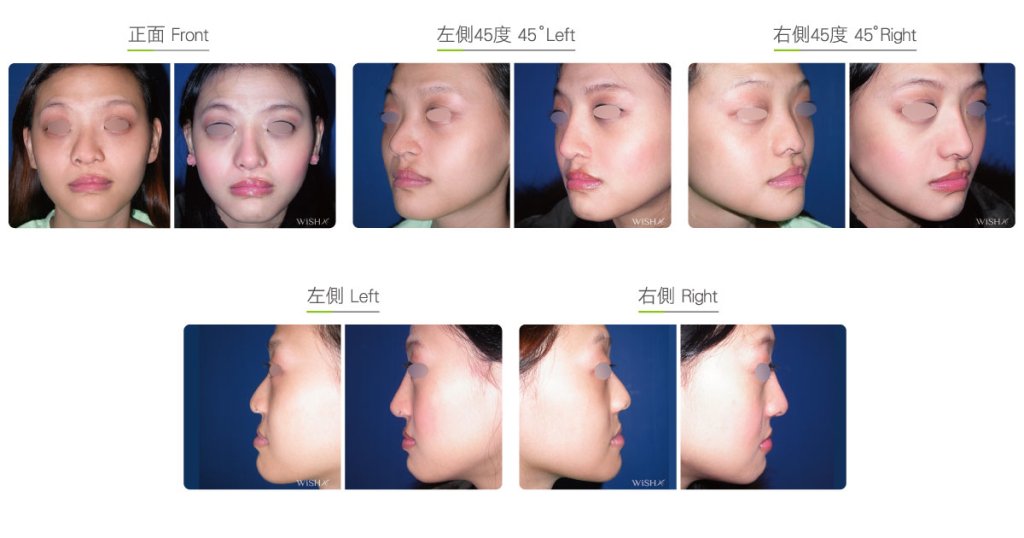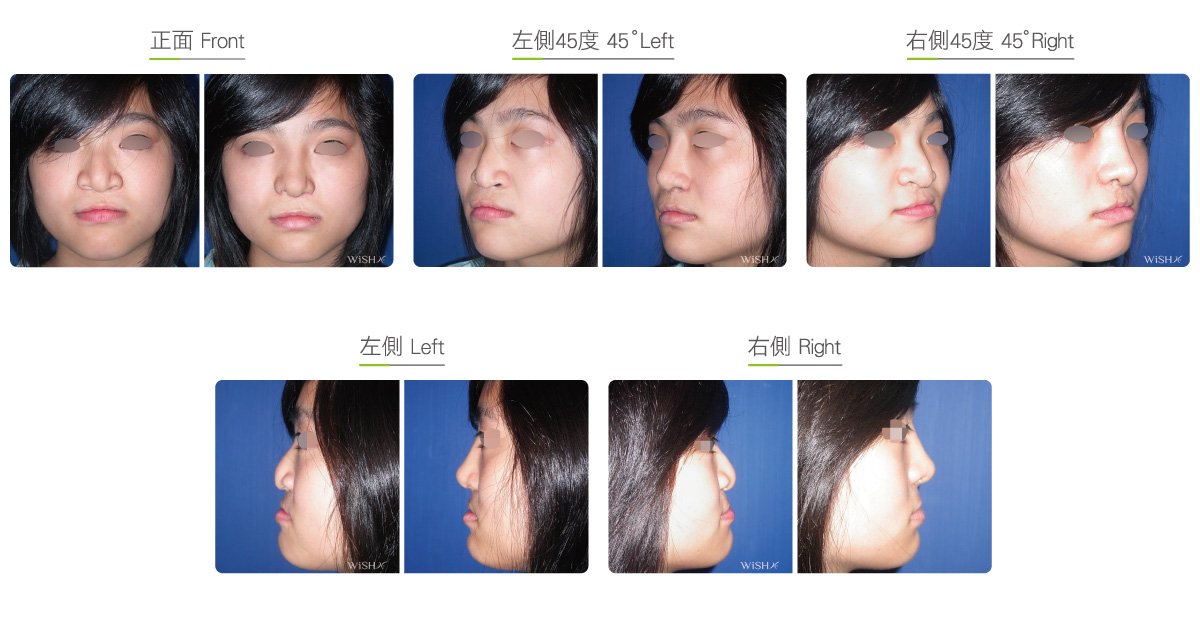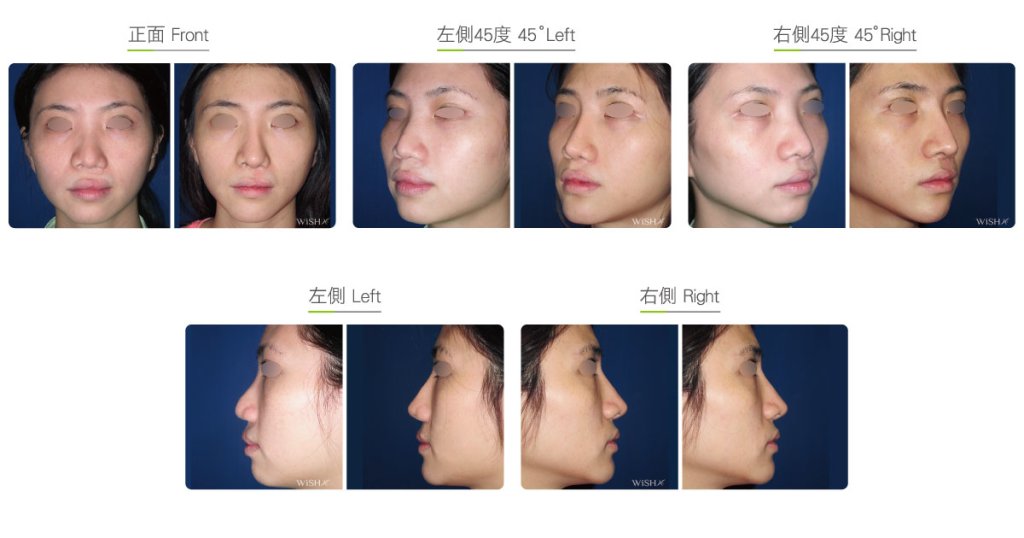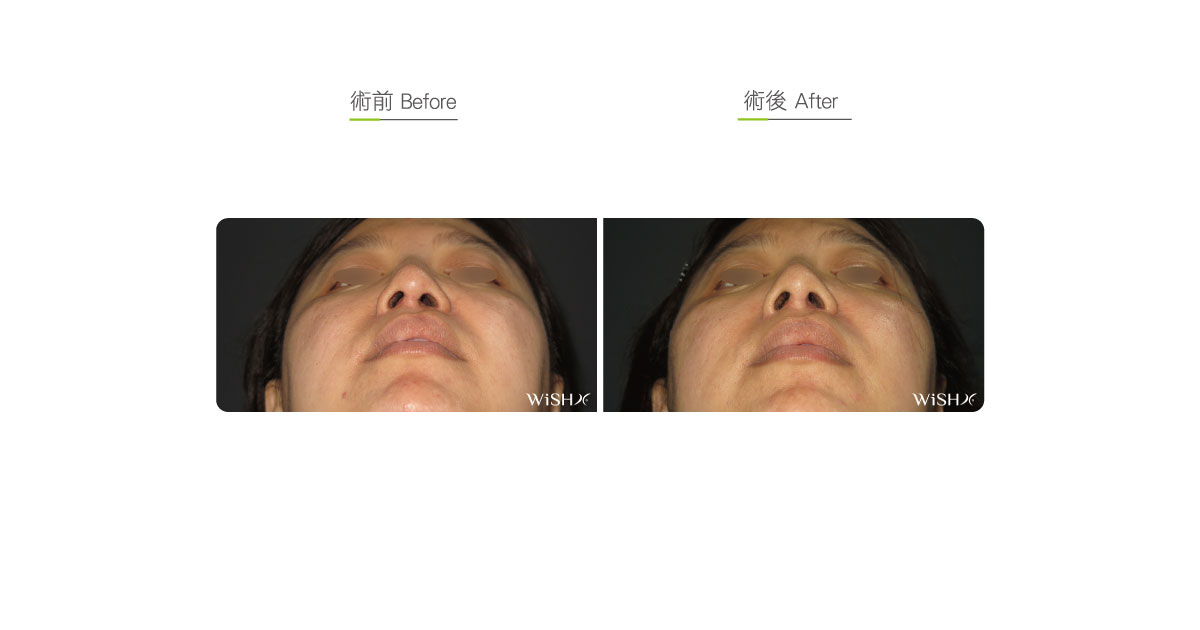Cleft Nose Reconstruction
This surgery is for the reconstruction of congenital nasal defects caused by cleft palate, but it needs to take into account the overall structure and esthetics. Although most patients receive multiple cleft lip and palate repairs before the age of 10 years, surgical scars and tissue defects still affect or delay nose development. In most cases the nasal tips and nostrils still present obvious abnormalities and traces of repair, and typical manifestations comprise nasal bridge deviation, uneven nostrils, obvious collapse of the ala nasi at the repair side of cleft lip and palate, and severe displacement of the nasal septum and columella. Moreover, the affected nostril base collapses due to the skeletal defect and lack of support, resulting in depression or uneven height at the alar base, and in severe cases, nasal septal dysplasia occurs or oronasal communication is still present. Therefore, on preoperative evaluation, the severity of the nasal deformity of each individual should be considered for the formulation of a plan, and surgical options also differ. In general, in case of mild nasal tip collapse or asymmetrical nostrils, the patient will undergo only the common open (Korean-style) rhinoplasty, which sculpts a normal nasal shape by augmenting the nasal bridge with emplaced nasal implants, improving the height of the nasal columella and nasal tip (supratip) with autologous cartilage grafts and reducing the ala nasi. However, for patients with a severe nasal deformity, additional nasal osteotomy (lateral corrective osteotomy) and nasal septal osteotomy are considered or even an autologous rib cartilage should be harvested for whole nasal reconstruction and filling of nostril basal bone defects to achieve satisfactory results.
Cleft nose reconstruction aims to maximally restore the normal nose shape but is unable to fully correct the unevenly sized and shaped nostrils. Moreover, because this nose shape results from congenital obvious asymmetry of bone structures, it is more likely to incur nasal bridge displacement or nasal tip support insufficiency than common rhinoplasty due to the limited improvement in the skeletal structures. Meanwhile, after the nasal implant is emplaced, attention should be paid to avoid potential scar proliferation and infection remaining or possibly caused by prior repair surgeries. Therefore, Dr. Chuang recommends that such patients should seek appropriate reconstruction based on original conditions and should not select a high-risk procedure because of their eagerness for improvement or high expectation to prevent probable complications.
Surgical conditions
Duration
- Type of anesthesia: IV sedation + local or general anesthesia (nasal osteotomy)
- Surgical incision: Inside the bilateral nostrils and at the bottom of the nasal columella or at the anterior chest wall (site for harvesting rib cartilage)
- Recovery: 5–7 days
- Removal of stitches: 7–10 days
General instructions
Fast from food and water on the day of operation
- Wear a tape or plaster splint for 1 week postoperatively to stabilize the nasal bridge.
- Avoid smoking and alcohol and impacts to the nasal tip for 3 months postoperatively, and clean the intranasal wound in the morning and evening every day.
- Abstain from eating raw food, seafood, and irritating food or spices for 3 months postoperatively.
- Avoid exposure of the nostrils to dirty water (sea water, swimming pool or sauna water, and hot springs) and close contact with pets and dust mites for 3 months postoperatively.
- In case of any flu symptoms after the surgery, please visit a doctor immediately.
Ideal candidates
- Patients with a nasal deformity due to congenital cleft lip and palate
- Those who have received nasal reconstruction for cleft lip and palate at a young age but who show poor results
Potential complications
- Poor wound healing
- Scar proliferation
- Prosthesis rejection
- Infection
- Asymmetrical nostrils
- Disturbance in respiration
Surgical advantages
-
It is able to modify the nasal deformity left by cleft lip and palate surgery and restore the normal appearance of patients.
Surgical drawbacks
-
The surgery is complex and takes a long time, and the risks of postoperative infections are relatively high.
-
It may not achieve the perfect nose due to the critical deformity of the cleft nose.
-
The nostrils and nasal midline are still unable to achieve complete symmetry even after nasal reconstruction.
-
Disturbance of respiration or nasal obstruction may occur after the surgery.





